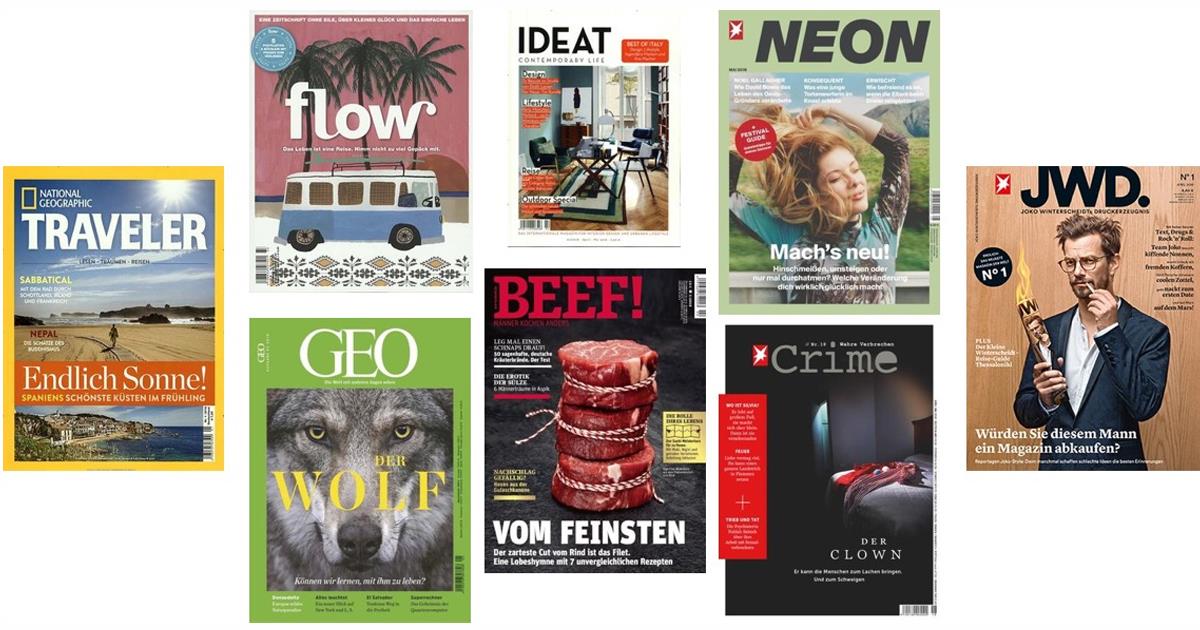Why the licensing format remains healthy – an interview with Daniel Gesse of G+J
Over the course of 10 years, Daniel Gesse, deputy head of international brands and licenses at Gruner + Jahr (G+J) International Magazines, has negotiated licensing agreements in print and digital across Europe, Eastern Europe, China, Brazil and India and is well positioned to reflect on how market and industry changes have influenced his business. Speaking to FIPP on the sidelines of the recent Digital Innovators’ Summit in Berlin, he says one of the most important lessons they have recently learnt is that licensors should be flexible and have the ability to respond quickly to trends within markets.
“Time to market has become an important asset because we need to reflect quickly on trends among societies and cater perfectly for new needs and interests in each market with the best possible journalistic products. This means we need a hands-on mentality and ability to adapt fast. We at G+J had to learn that over the last few years. Ten years ago, we would launch one new magazine per year and hope that it would become a huge success. Sometimes it worked, sometimes not. Today, we listen closely to trends and the needs of our readers. And we launch several magazines per year that are perfectly suited to them. This has turned out to be a much more successful strategy. Our international license partners can take advantage of these shortened innovation cycles by launching those new concepts under license.”

360 degree approach
“And we reflect these needs also in our business models. G+J, as a licensor, in selected cases, now supports test launches as well as more flexible license agreements with partners. We want our local partners to be successful with our brands. It is increasingly important that we support a 360 degree approach of the brand to allow the product and its contents to be published across additional media and platforms to benefit from other product-formats.”
Yet, despite these changes and need for agility, the licensing format remains healthy, says Gesse. “It’s not necessary to re-invent the wheel. Licensing cooperation offers the perfect way to quickly start innovative and success-proven concepts with lean local structures and substantially lower costs than developing a new concept from scratch locally.”
As best practice examples he refers to G+J’s five major licensing portfolio brands:
- Geo, a premium reportage magazine nourishing reader’s curiosity with comprehensive reports on Nature, Science and human interaction with Planet Earth. The magazine is published in 10 countries making it G+J’s most international magazine brand;
- Gala, a lifestyle magazine, published in four countries;
- Capital, a business publication also published in four countries; and
- Beef!, a male gourmet lifestyle magazine, now published in three countries.
Geo has evolved internationally with several websites as well as iPad apps and also branching into Geo calendars, books, fair trade products, exhibitions and events, merchandising products and TV documentaries.

Real-time market trends
With Beef! and their most recently rolled-out license, they are learning some of their most interesting lessons, says Gesse. As a start, it showed them that there is still strong potential for further international launches. After launching Beef! in Spain in 2015 as a quarterly, their license partner is now ready to increase the frequency to bi-monthly due to the growing demand from readers and advertising clients. The title is also highly successful in France.
Part of the success is because the title’s launch and licensing were reactions to real-time market trends. “We saw that men are interested in high-level cooking. They aim for chef-level experiences with friends instead of merely visiting the restaurants (even though Beef! will open its first restaurant in June under license in Frankfurt). Men now like to turn food into real-life experiences as well as into an enjoyable handcraft and learn more about the backgrounds of cooking, perfect bartending, as well as kitchen tools such as great knives and espresso machines.
“What further surprised us as licensor of Beef! is the high degree of content takeovers from the mother edition – up to 90 per cent. Furthermore, we learned that Beef! magazine speaks to an exceptionally affluent target group, making the brand very attractive for premium advertising clients such as luxury brands, premium car manufacturers, premium kitchen equipment brands, liquor products and more. This trend is reflected in our international editions as well.”
In similar responses to market trends, innovation and initiative, G+J has started more than 20 new magazines and digital projects during the past 24 months. Most of these brands are continuously being evaluated for international market potential.
As example, Gesse mentions Essen & Trinken mit Thermomix, a food line extension focusing on the Thermomix food-processing brand, their exclusive cooperation partner, Hygge, a women’s magazine dedicated to simplification and the Danish Hygge lifestyle, Cord, the first male magazine for decelerated slow journalism and mindfulness as well as Stern Crime, a true crime magazine.
G+J’s continued commitment and belief in the value of licensing is underpinned by the fact that the company is also a successful licensee, of which their local editions of National Geographic, Flow (in Germany and France), as well as Ideat, the upscale living magazine from France, are perfect examples.
More like this
At the new Gruner + Jahr the only constant is ongoing renewal
The state of brand licensing around the world
Deep dive: Subscription models… If you build it, will they come?
How culture can save publishers
When advertising goes… DIS focus on alternative revenue streams







